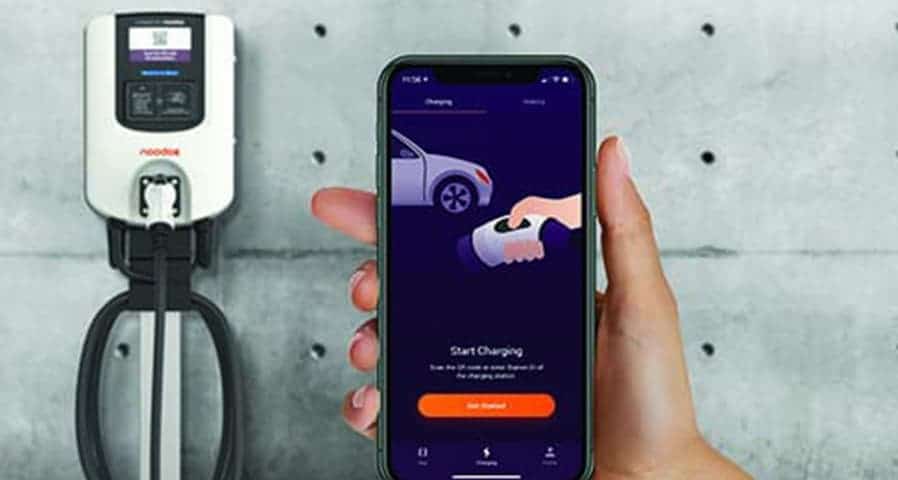Even electric vehicle drivers can have problems keeping EV terminology straight. The new technology comes with terms like amp and alternating current to name a few. To help you understand what these and other terms mean, here’s an explanation of the common electric vehicle terminology.
Alternating Current (AC)
An electrical current that regularly reverses direction at specified intervals.
Amp
The measurement of the electrical current per unit. 1 amp equals one unit of electricity.
BEV
The acronym for a battery-electric vehicle.
Charging
Plugging the car battery into an electric charging outlet.
Charging Point
The location of the station where an electric vehicle can recharge the battery at home or a public place.
Charging Station
Part of the infrastructure used to supply power to electric vehicles. Charging stations are also referred to as electric vehicle supply equipment (EVSE).
Connector
The small part at the end of the charging cable that connects to the electric vehicle.
CHAdeMO Plug
A type of charging system that allows up to 50kW of electricity to flow to the connected vehicle. Not every electric car is compatible with a CHAdeMO plug, even though it is the fastest way to recharge the vehicle’s battery. Currently, Citroen, Honda, Kia, Mazda, Mitsubishi, Nissan, Peugeot, Subaru, and Toyota are compatible with CHAdeMO technology. Tesla electric vehicles can also be recharged with a CHAdeMO plug with the purchase of an adaptor.
DC
Unlike alternating electrical currents, DC or direct currents only run in one direction.
DC Fast Charging
The fastest way to fully recharge an electric vehicle. The electrical current ranges from 50kW to 120kW and can charge the battery in 30 to 40 minutes.
EV
The acronym for an electric vehicle.
EVSE
Electric vehicle supply equipment that controls the amount of current traveling from the charging station to your car. It ensures you can safely recharge the vehicle in a reasonable amount of time.
EREV
EREV stands for an extended-range electric vehicle. Along with the rechargeable motor, there’s also an auxiliary power pack that recharges the battery while you’re driving. You can go farther between charging stations.
FCEV
A fuel cell electric vehicle (FCEV) generates electricity that powers the motor. Most fuel cells are hydrogen and not gas-based.
HEV
A hybrid electric vehicle (HEV) uses an electric motor powered by a small battery. Unlike EVs, an HEV cannot use a charging station. The battery is charged by the vehicle’s internal combustion engine (ICE) to reduce fuel usage. These vehicles can only go short distances using only electricity.
Incentives
State and local governments often offer incentives to encourage consumers and businesses to buy electric vehicles. Incentives can include lower purchasing prices and exemptions from emissions, road, and traffic taxes.
ICE
An internal combustion engine (ICE) that runs on gas instead of electricity. The fuel generates power that also produces harmful emissions like carbon dioxide (CO2), carbon monoxide (CO), and nitrogen (NOx), along with other hydrocarbons that are harmful to the environment.
KWH
Kilowatt-hour (KWH) is the unit of electricity transferred in an hour by one kilowatt of energy. The vehicle’s battery is measured in kilowatt-hours, it’s similar to the number of gallons of fuel the gas tank holds.
Lithium-Ion Battery
The current standard for electric vehicles is lithium-ion batteries. The battery charges quickly and produces a strong current. Lithium-ion batteries also have a long life span, typically 8-10 years. Even after 10 years, most will still hold up to 80% of the charge.
Level 1 Charging
Level 1 charging is slow and usually reserved for home use. The charging system is included with the purchase of an EV and plugs into a 120V outlet. It only delivers 15, 20, or 30 amps using alternating current, and takes several hours to fully charge the car’s battery.
Level 2 Charging
Level 2 charging stations are faster and deliver 240V of electricity. These charging stations are usually found in public places, and drivers can upgrade to the system at home.
Level 3 Charging
Level 3 charging stations or DC fast chargers are charger electric vehicles with direct current at as high as 800 volts. This allows for very rapid charging but comes with a hefty price tag. These are most common in gas stations looking to add additional services for Ev owners.
PHEV
Plug-in hybrid electric vehicles (PHEV) use both gas and electricity to power the engine. PHEVs have larger battery packs so you can go further without using gas.
Pure Electric
The vehicle is only powered by electricity produced by the onboard rechargeable battery.
Range
How far the vehicle travels relying solely on electric power.
Range Anxiety
The fear of running out of power in an electric vehicle before reaching your destination or a charging station.
Regenerative Braking
The term refers to the energy recovery system most EVs use to charge the battery when you’re reducing speed. It helps to extend vehicle range while also ensuring you can slow down or stop when needed.
SAE-J1772
It is the North American standard for the electrical connector in the vehicle. It covers the requirements needed to charge EV/ PHEV automobiles safely and effectively.
SAE Combo
An SAE combo (CCS) is the advanced version of a level 2 charging plug. It’s designed for faster charging and comes with two contact points that support AC and DC charging up to 170w.
Type 1 Plug
The plug has a single contact point capable of supporting charges up to 7.4kW.
Type 2 Plug
You get a faster charging time with a type 2 plug. It delivers up to 22kW and is compatible with all types of charging plugs.
Torque
The force that causes rotation. In vehicles, it allows vehicles to accelerate. Gas engines measure torque in rotations per minute (RPM). Revving the engine increases torque, except in electric automobiles. Torque increase when the vehicle is at a standstill.
Utility Rate
Utility rates are based on time and usage. Peak charging hours equal a higher cost.
ZEV
A zero-emissions vehicle (ZEV) does not emit harmful hydrocarbons and other environmentally harmful pollutants.
Understanding EV Terminology
Electric vehicle terminology is often confusing until you get used to the acronyms and other terms. However, if you drive an EV or are interested in providing your staff, customers, and visitors with an EV charging solution for your parking lot these are must know terms.
The experts with Apogee Charging Solutions are standing by to answer any questions you may have. You can call 484-816-2076 or email [email protected], for more information on EV charging solutions!








0 Comments